Q
What is the Perodua Axia Specs? Here's the Full Specifications
The Perodua Axia is one of the most popular entry - level small cars in Malaysia. It offers a variety of versions to meet different needs, including models like the Standard G, SE, and X.
In terms of power, the Axia is equipped with a 1.0 - liter three - cylinder naturally aspirated engine. It has a maximum power of 67 horsepower and a peak torque of 91 Nm. It's paired with either a 5 - speed manual or a 4 - speed automatic transmission. It has excellent fuel economy, with official fuel consumption data showing around 4.5 liters per 100 kilometers.
The vehicle's body dimensions are 3640mm (length) × 1620mm (width) × 1510mm (height), and its wheelbase is 2455mm. It's suitable for city driving and easy to park.
Safety features include dual airbags, an ABS anti - lock braking system, an EBD electronic brakeforce distribution system, and ISOFIX child seat anchors. Higher - spec versions also come with a Vehicle Stability Control (VSC) system and a Traction Control (TRC) system.
For the interior, the Axia offers basic and practical features such as air - conditioning, USB ports, and Bluetooth connectivity. Higher - end models are equipped with a touchscreen and a reversing camera.
The Axia offers extremely high cost - effectiveness, making it especially suitable for young families on a budget or first - time car buyers. Its low maintenance cost and reliable quality are also among the reasons why Malaysian consumers favor it.
If you're considering buying a small car, it's recommended to choose the appropriate version according to your own needs and pay attention to regular maintenance to extend the vehicle's lifespan.
Special Disclaimer: This content is published by users and does not represent the views or position of PCauto.
Related Q&A
Q
What Segment is Perodua Axia?
The Perodua Axia belongs to the A-Segment vehicles in the Malaysian market, which is the most entry-level microcar category. It mainly targets consumers with limited budgets who prioritize fuel economy. Its body size is compact (about 3,640mm in total length and a wheelbase of 2,450mm). It is equipped with a 1.0L three-cylinder engine and paired with a D-CVT gearbox, highlighting the flexibility for urban commuting and the advantage of low cost. The official fuel consumption data shows that it can travel about 22 kilometers per liter of gasoline, meeting the needs of Malaysian consumers for economical and practical small cars.
In terms of extended knowledge, Malaysia's automobile classification standards usually refer to the European system. Besides the Axia, A-Segment models also include the Proton Saga and other vehicles. These cars are characterized by their affordable prices (the starting price of the Axia is around RM22,000 to RM49,000) and are suitable for narrow road environments. However, their safety configurations have been significantly improved in recent years. For example, all models of the 2023 new Axia come standard with ABS + EBD and dual airbags, and the top - end version is even equipped with the ASA 3.0 advanced safety assistance system, indicating that entry - level car models are gradually upgrading their technological equipment. Consumers can choose different configuration versions according to their budgets. At the same time, it is recommended to test - drive and compare the Proton Iriz in the same class or second - hand B - Segment models before purchasing a car to comprehensively evaluate the balance between space and functionality.
Q
What is the Reslae Value of Perodua Axia?
As one of the best-selling entry-level models in Malaysia, the Perodua Axia shows relatively stable resale value in the used car market. This is mainly due to advantages such as the high vehicle ownership of the brand, low maintenance costs, and good fuel economy. Depending on factors like vehicle age, mileage, vehicle condition, and configuration, Axias that are one to three years old usually retain 60% to 75% of their original price, while those that are five years old are around 40% to 50%. The specific price also needs to refer to market supply and demand and maintenance records. In addition, the durability of the Axia and its extensive service network also support its resale value.
For consumers considering buying a used Axia, it is recommended to give priority to models with complete original factory maintenance records to ensure the vehicle condition. At the same time, pay attention to the configuration differences of minor facelifts in different years. For example, models after 2022 have upgraded safety features, and such updates may have a positive impact on the resale price. In the Malaysian used car market, economical small cars like the Axia usually have a fast turnover rate and are a practical choice for car buyers with limited budgets.
Q
How Many CC is Perodua Axia?
The Perodua Axia is one of the most popular entry - level compact cars in Malaysia. The engine displacement varies across different versions. Currently, the latest model of the Axia is equipped with a 1.0 - liter three - cylinder naturally aspirated engine, with a specific displacement of 998cc. This is a common engine configuration for compact economy cars. This engine emphasizes fuel efficiency and is highly suitable for city commuting and daily use.
For Malaysian consumers, the low displacement of the Axia not only means lower fuel consumption and road tax but also meets the domestic demand for economical and practical vehicles. It's worth noting that engine displacement (CC) doesn't directly determine a vehicle's power performance. Other factors such as horsepower, torque, and gearbox tuning also need to be comprehensively considered. Although the Axia has a relatively small displacement, its lightweight body design and optimized transmission system ensure sufficient power for daily driving.
Moreover, the Malaysian market is quite sensitive to the displacement of compact cars. Therefore, engines around 1.0 liters are very common locally. They can balance performance and cost and are also suitable for the local road conditions and fuel price environment.
Q
What is the Engine in Perodua Axia?
The Perodua Axia is a highly popular economy car in the Malaysian market. It is equipped with a 1.0-liter three-cylinder naturally aspirated engine, model number 1KR-DE. This engine was jointly developed by Perodua and Toyota of Japan. It adopts the double overhead camshaft (DOHC) and variable valve timing (VVT-i) technologies. The maximum power is 67 horsepower and the maximum torque is 91 Nm. It is paired with a 4-speed automatic transmission or a 5-speed manual transmission. The overall performance is smooth and it boasts excellent fuel economy, making it very suitable for urban commuting.
The design of this engine focuses on low fuel consumption and low emissions, meeting the environmental protection requirements of the Malaysian market. At the same time, it also reduces the daily usage cost for car owners. For readers who want to learn more about automotive knowledge, although three-cylinder engines may be slightly inferior to four-cylinder engines in terms of smoothness, their lightweight and high - efficiency features make them very popular in small - displacement models. The addition of VVT - i technology further optimizes power output and fuel efficiency, which are common technological trends in modern small - displacement engines.
Q
What is the Gearbox Type of Perodua Axia?
The transmission types of the Perodua Axia include manual transmission (MT) and continuously variable transmission (CVT). The 2023 Perodua Axia E 1.0 MT is equipped with an MT transmission, offering more direct gear - shifting control for drivers who prefer the manual handling feel and bringing a more engaging driving experience. On the other hand, models like the 2023 Perodua Axia 1.0 G, 1.0 X, 1.0 SE, and 1.0 AV are equipped with a CVT transmission. Its smooth gear changes can provide a more comfortable driving and riding experience and help improve fuel economy under specific operating conditions. The diverse transmission configurations fully meet the personalized needs of different consumers.
Q
What is the PCD Size of Perodua Axia?
The PCD (Pitch Circle Diameter) of the Perodua Axia is 100mm, which means its wheel hub bolt holes are distributed on a circle with a diameter of 100mm. Usually, it is fixed with 4 bolts. This specification is quite common among small cars in the Malaysian market. For example, models like the Proton Saga also use the same PCD size. Understanding the PCD size is very important for car owners when replacing wheels or upgrading tires. You must ensure that the PCD of the new wheels is the same as that of the original vehicle; otherwise, it may lead to installation mismatches or potential safety hazards when driving.
In addition to PCD, when replacing wheels, you also need to pay attention to the center bore diameter (CB) and the offset value (ET). These parameters together determine whether the wheels are suitable for the vehicle. If you plan to modify the wheels of your Axia, it is recommended to choose certified products and consult professional technicians to ensure compatibility and safety. At the same time, after modification, you also need to comply with the regulations of the Malaysian JPJ to avoid affecting the vehicle's annual inspection or insurance rights.
Q
Does Perodua Axia Have Apple Carplay?
Currently, the Perodua Axia doesn't come standard with Apple CarPlay. As one of the most popular entry - level models in the Malaysian market, the Axia focuses more on practicality and economy. Its infotainment system mainly offers basic functions such as Bluetooth connection, USB playback, and radio. If users want Apple CarPlay, they can consider installing a compatible central control system through third - party modification shops. However, it should be noted that this may affect the original factory warranty.
Apple CarPlay is an intelligent connectivity technology that projects the iPhone interface onto the in - car system, enabling convenient operations for functions like navigation, music, and calls. In recent years, many new cars have made it a standard feature. For example, the Proton Saga in the same class provides this function in some high - end versions. Nevertheless, the Axia remains a popular choice for city commuting thanks to its excellent fuel economy and low maintenance costs. It is recommended to weigh the priorities between technological features and practicality based on your own needs before buying a car.
Q
What is the Tyre Brand of Perodua Axia?
As one of the most popular entry - level models in the Malaysian market, the original - equipped tire brands of the Perodua Axia vary according to different years and vehicle versions. The common configurations include tires from the Silverstone brand, widely used in the local market. For example, there are cost - effective and durable tires like the Silverstone Kruizer NS800 or Synergy M5. These tires are specifically designed for the Southeast Asian climate, emphasizing wet - grip and wear resistance.
Some high - end versions may also use entry - level products from other international brands such as Bridgestone or Goodyear to enhance comfort and noise reduction. The tire specifications are usually 165/55 R14 or 165/60 R14, which meet the energy - saving requirements for urban commuting.
It is recommended that car owners regularly check the tire pressure and tread depth. In Malaysia's rainy climate, it's crucial to ensure the tires have good drainage performance. If replacement is needed, you can refer to the original factory specifications or consult a certified repair center. When upgrading, you can also consider energy - saving tires from brands like Michelin or Continental to further reduce fuel consumption. However, be aware that the handling characteristics of different brands of tires may affect your driving experience.
Q
Is Perodua Axia a Good Car? Learn the Pros and Cons Here
As one of the best-selling entry-level models in Malaysia, the Perodua Axia is indeed an economical small car suitable for urban commuting. Its advantage lies in excellent fuel economy. Official data shows that the 1.0L engine paired with a D-CVT transmission can achieve a range of over 18 kilometers per liter, making it very suitable for young families on a budget or first-time car buyers. Meanwhile, its compact body makes it easy to navigate through crowded city areas. The standard dual airbags, ABS, and ISOFIX child seat anchors also meet basic safety requirements. Low maintenance costs and an ample supply of parts are also its notable advantages.
Of course, this car also has some limitations. For example, the engine noise is quite obvious when driving at high speeds, the rear space is a bit cramped for adults, and the entry-level E model is not equipped with an ESC stability control system. If you often drive long distances, you may need to consider a higher - specification version.
It's worth noting that the Axia received a three - star rating from ASEAN NCAP in 2023. It's recommended to test - drive and compare with its counterparts like the Proton Saga or Bezza according to your actual needs before buying a car. At the same time, you can pay attention to the promotional offers regularly launched on the Perodua official website, such as free maintenance packages or low - interest loans. These can further enhance the cost - effectiveness of car ownership.
Q
What is the Width of Perodua Axia?
The width of the Perodua Axia varies depending on the model and generation. For the 2018 - 2019 models, such as the Standard E, Standard G, SE, and Advance, the width is 1,620 millimeters, while the 2019 Axia Style 1.0 AT has a width of 1,625 millimeters. In the 2023 models, the Axia E 1.0 MT has a width of 1,620 millimeters, and the Axia 1.0 G, 1.0 X, 1.0 SE, and 1.0 AV reach a width of 1,665 millimeters. The body width is an important parameter that directly affects the vehicle's handling, its ability to pass through narrow spaces, and the interior space of the passenger compartment and luggage compartment.
Latest Q&A
Q
How to open the hood of Subaru Crosstrek?
To pop the hood on a Subaru Crosstrek, start by locate the hood release lever under the left side of the driver’s seat. Give it a good pull until you hear the hood slightly pop up. Then head around to the front of the car, stick your hand into the gap at the center of the hood’s leading edge, and find the secondary safety latch—it’s usually a small lever or button. Push or flip that latch to the side while gently lifting the hood up. The Crosstrek uses this double-latch setup to make sure the hood stays put while you’re driving, which is a solid safety move.
Here in Malaysia, with our hot and rainy weather, it’s super important to regularly check the fluid levels and components under the hood. Keep an eye on things like coolant and brake fluid especially—they’re key to keeping your ride running smoothly. If you notice the hood feels heavy or tough to lift, check the support struts to make sure they’re working right. A little lubricant on the hinges can also help if needed. And let’s not forget Subaru’s unique boxer engine layout—when you’re poking around, take note of how the hoses and wiring are routed to avoid accidentally bumping or damaging anything.
Q
What colors does Subaru Crosstrek have?
As of 2023, the Subaru Crosstrek's color palette in Malaysia typically leans into classic, practical choices. Think Crystal White Pearl, Magnetite Gray Metallic, Deep Blue Pearl, Ignition Red Crystal, and Cool Gray Khaki – shades that balance everyday dirt resistance with that outdoorsy, stylish vibe. Of course, availability can shift slightly depending on the model year or if there's a special edition in the mix.
For Malaysian buyers, picking a color isn't just about personal taste; the local climate plays a role too. Lighter hues tend to handle the heat better and hide dust, while darker tones exude a more steady presence, which can be nice for business settings.
Subaru's paint tech is worth noting here – they use eco-friendly water-based paints and anti-UV treatments, which do a solid job of keeping the color from fading. That's a big plus in Malaysia's year-round high temperature and humidity conditions.
If you're after the latest color options or any limited-edition finishes, your best bet is to hit up a Subaru authorized dealer in Malaysia. They'll have the most accurate info on current stock and any customization options. Plus, they can give you practical tips on keeping that paint looking sharp, like regular waxing to protect against acid rain and harsh sunlight.
Q
When to replace the spark plugs of Subaru Crosstrek?
The Subaru Crosstrek's spark plugs typically need changing every 60,000 kilometers or 5 years, whichever comes first. That's the standard from the factory service manual, but you might need to adjust based on your driving conditions and habits. For example, if you're doing a lot of short trips or frequent stop-starts in Malaysia's hot weather, you should check them as early as 40,000 km.
Subaru's boxer engine design puts the spark plugs in a tougher working environment, so it's best to stick with the original iridium or platinum plugs recommended by the factory. These ensure better durability and ignition performance. Keep an eye out for signs like hard starting, rough idling, increased fuel consumption, or sluggish acceleration—those could mean your plugs are wearing out and need checking.
Malaysia's humid, rainy climate can also speed up wear on ignition system components, so don't forget to regularly inspect the ignition coils and high-tension leads too. If you're a DIY enthusiast, know that changing the Crosstrek's plugs requires special tools, and their position in the boxer engine is a bit tricky. If you're not experienced, better leave it to the pros to avoid damaging the threads or ignition coils.
For daily maintenance, using a good quality fuel additive can help clean carbon deposits in the combustion chamber, which indirectly extends plug life—but it's no substitute for regular replacement.
Q
Which gasoline suits Subaru Crosstrek?
For Subaru Crosstrek owners in Malaysia, you've got two solid fuel choices: RON 95 or RON 97 unleaded petrol. The decision really comes down to your budget and how you drive. RON 95 is the practical pick – it's more wallet-friendly and totally up to the task for everyday commuting and most driving scenarios. On the flip side, RON 97 can deliver slightly more consistent combustion efficiency when you're pushing the engine hard, like during high-load situations or spirited driving.
Under the hood, the Crosstrek's FB20 boxer engine is naturally aspirated and actually pretty flexible when it comes to fuel. That said, if you want to keep carbon buildup in check, it's a good idea to opt for Euro 5 compliant fuel when you can – it's cleaner and better for the engine in the long run.
Malaysian Crosstrek drivers should also remember to regularly use the fuel additives recommended by Subaru. This is especially important for maintaining the health of the direct injection system, which can be prone to carbon deposits if you skimp on this. Another thing to note is that fuel quality can vary a bit from region to region. If you're heading out on a road trip to more remote areas, maybe consider bumping up to a higher octane fuel just to be safe, as the local petrol might not be as consistent.
Here's the key point though: unlike some high-performance cars that demand premium fuel, the Crosstrek's engine isn't tuned to require RON 97. So, don't feel pressured to shell out extra cash for higher octane than you need – it's just unnecessary expense. At the end of the day, keeping up with regular maintenance and sticking to reputable petrol stations are the best ways to keep your Crosstrek's engine running smoothly for years to come.
Q
How many miles can a Subaru Crosstrek run?
The Subaru Crosstrek, that compact SUV known for its rugged durability and full-time all-wheel drive system, can typically clock up 200,000 to 300,000 kilometers – and often more – with proper care. Of course, your actual mileage will depend on your driving style, how regularly you service it, and let's not forget Malaysia's unique road conditions and climate. That hot, humid weather can take a toll on rubber components and electronics, so I'd recommend keeping up with coolant changes and giving your chassis parts a regular once-over.
Subaru's boxer engine is great for that low center of gravity, but it does demand stricter oil change schedules. Stick to fully synthetic oil and change it every 5,000 kilometers or 6 months, whichever comes first. For Malaysian Crosstrek owners, those rainy seasons mean paying extra attention to your brake system and making sure those sunroof drain holes stay clear – you don't want water pooling up where it shouldn't.
The real key to making your Crosstrek last? Follow the manufacturer's service manual to the letter, use genuine or approved parts, and don't ignore those little niggles like strange noises or warning lights – fix 'em early. In the competitive compact SUV segment, the Crosstrek holds its value pretty well, sitting comfortably in the upper-middle range. The used car market really appreciates a vehicle with a complete service history, so hang onto all those repair receipts – they'll definitely help boost your resale price down the line.
View MoreRelated News

Perodua Axia Hits 790,000 Sales: What Makes It So Popular?
AshleyAug 12, 2025
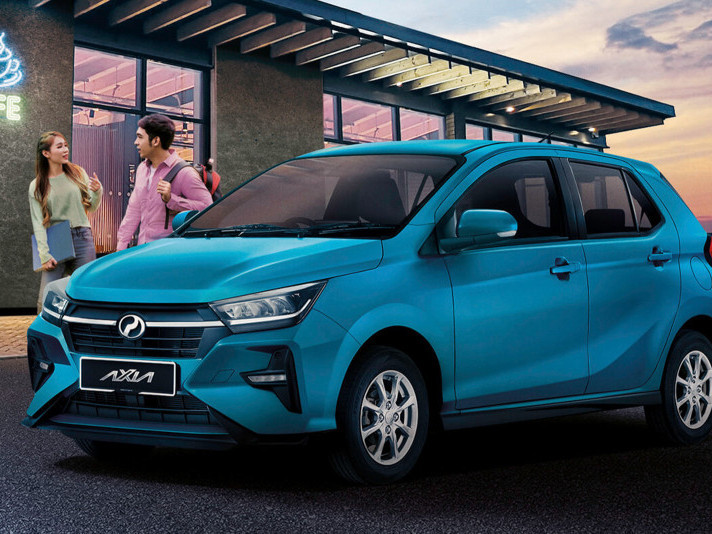
How Much is the Perodua Axia and How to Get the Best Price for Your Desired Model
WilliamMar 25, 2025
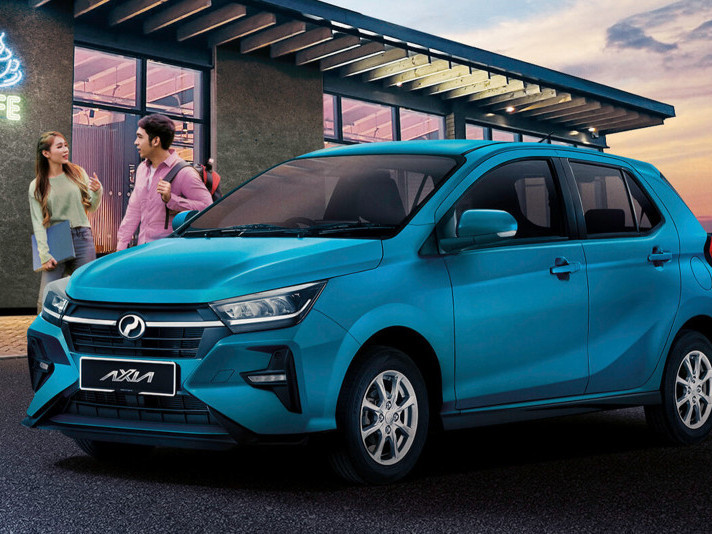
Perodua Axia’s Monthly Payments and Loan Calculation in Malaysia
WilliamMar 21, 2025
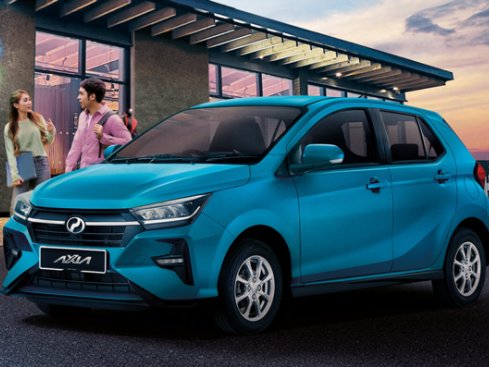
The 2023 Perodua Axia is priced from RM 22,000, with the 1.0 E MT offering the highest cost-performance ratio?
LienJun 11, 2024
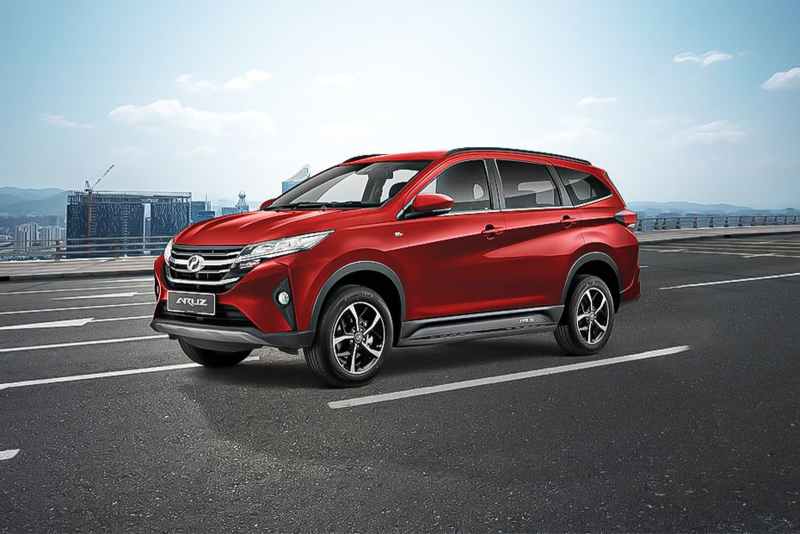
Perodua Aruz Review: A Practical and Safe SUV That Won’t Break the Bank
JamesJul 25, 2025
View More





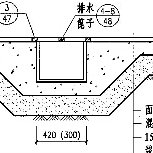




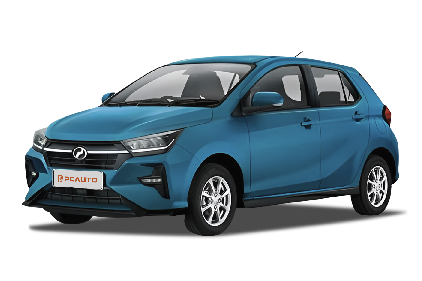



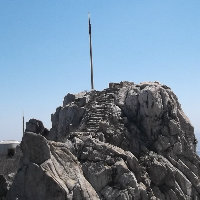

Pros
Cons